Abstract
As the Internet begins to play a greater role in many healthcare processes, it is inevitable that remote monitoring of patients' physiological parameters over the Internet will become increasingly commonplace. Internet-based communication between patients and their healthcare providers has already become prevalent, and has gained significant attention in terms of confidentiality issues. However, transmission of data directly from patients' physiological biomonitoring devices over the Web has garnered significantly less focus, especially in the area of authentication and security. In this paper, we describe a prototype system called Glucoweb, which allows patients with diabetes mellitus to transmit their self-monitored blood glucose data directly from their personal glucometer device to their diabetes care provider over the Internet. No customized software is necessary on the patient's computer, only a Web browser and active Internet connection. We use this example to highlight key authentication and security measures that should be considered for devices that transmit healthcare data to remote locations.
Full text
PDF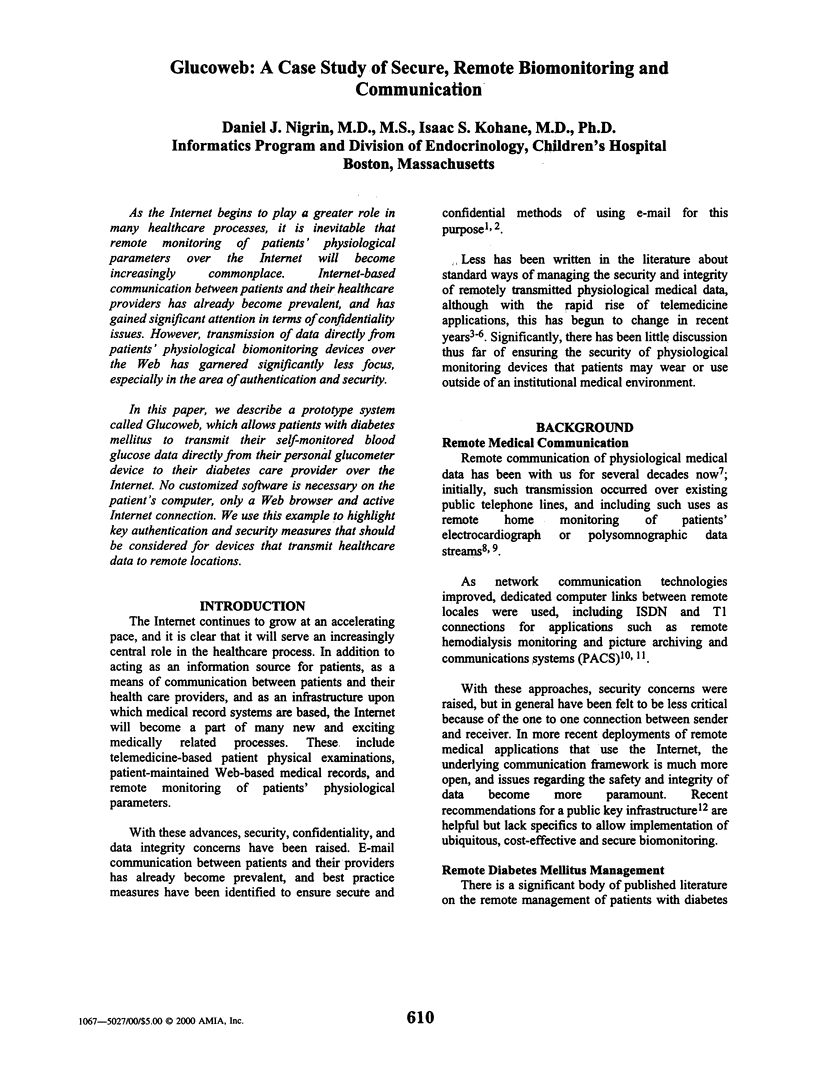
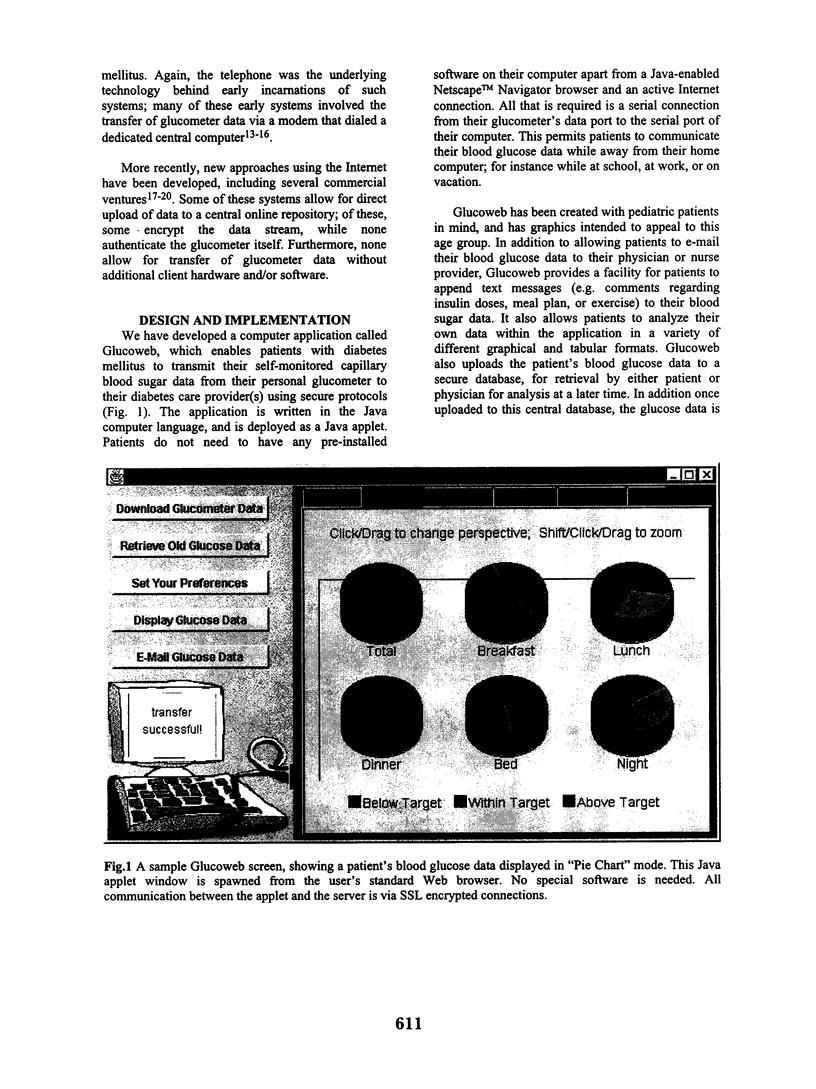
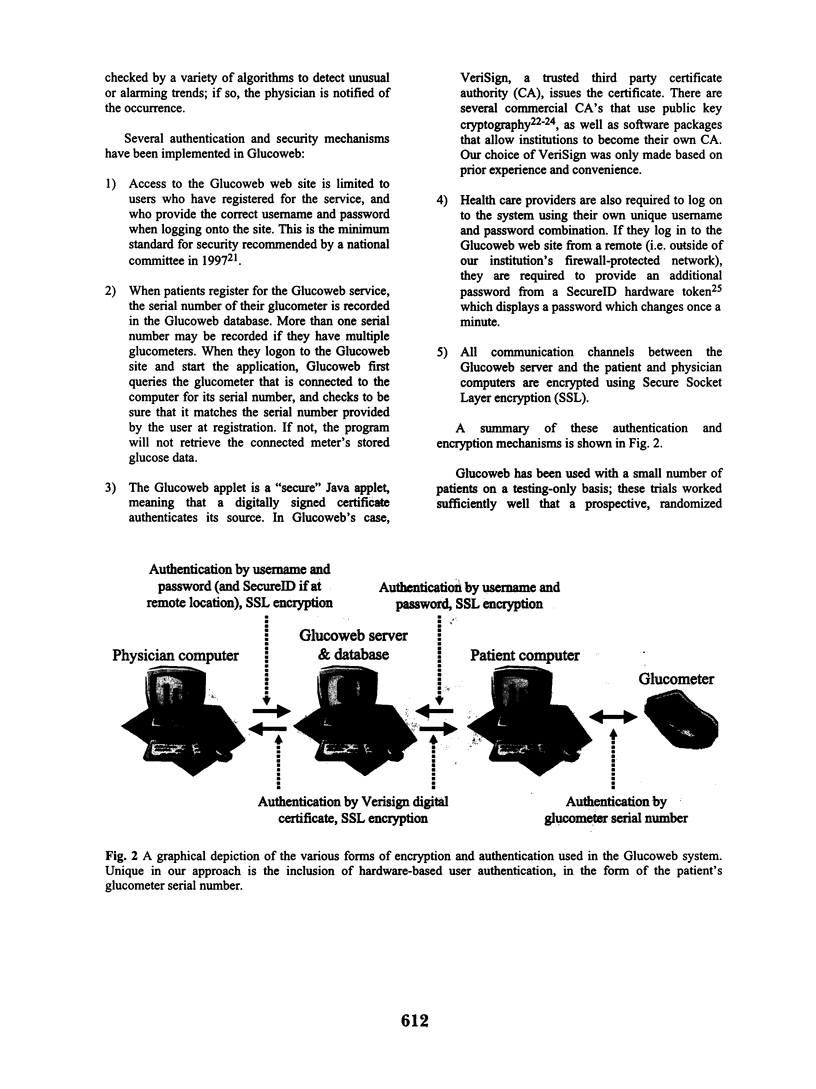
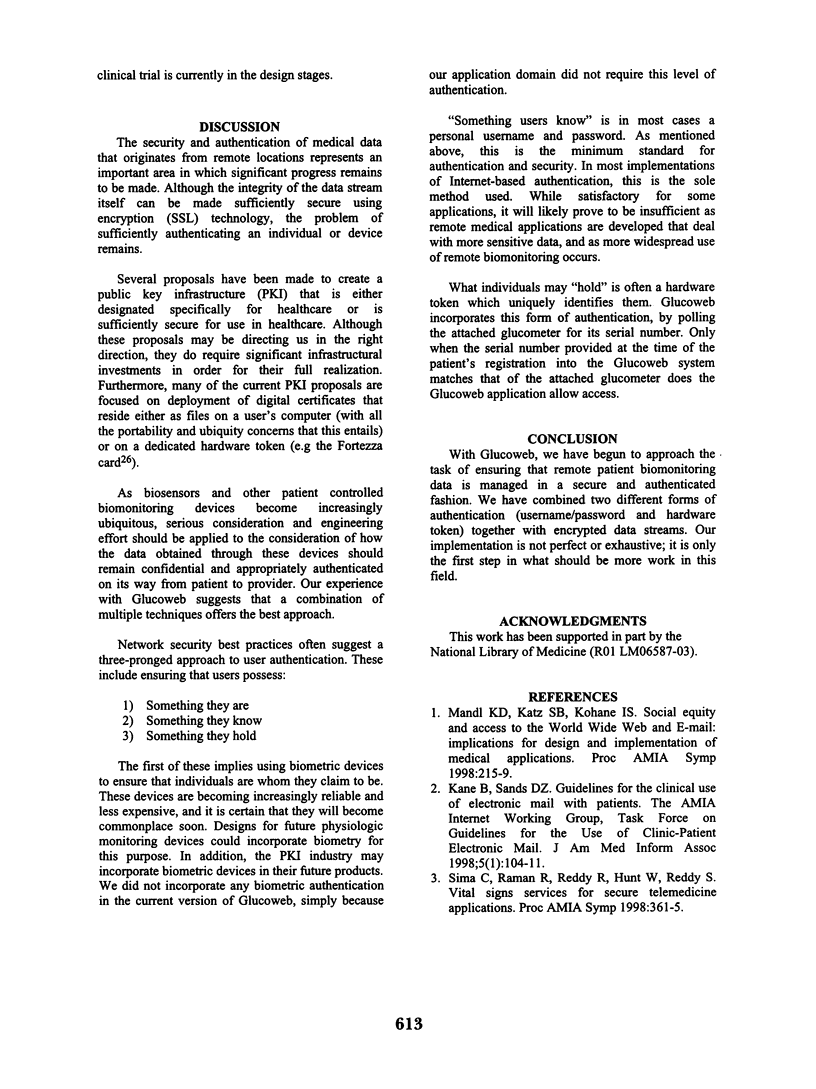
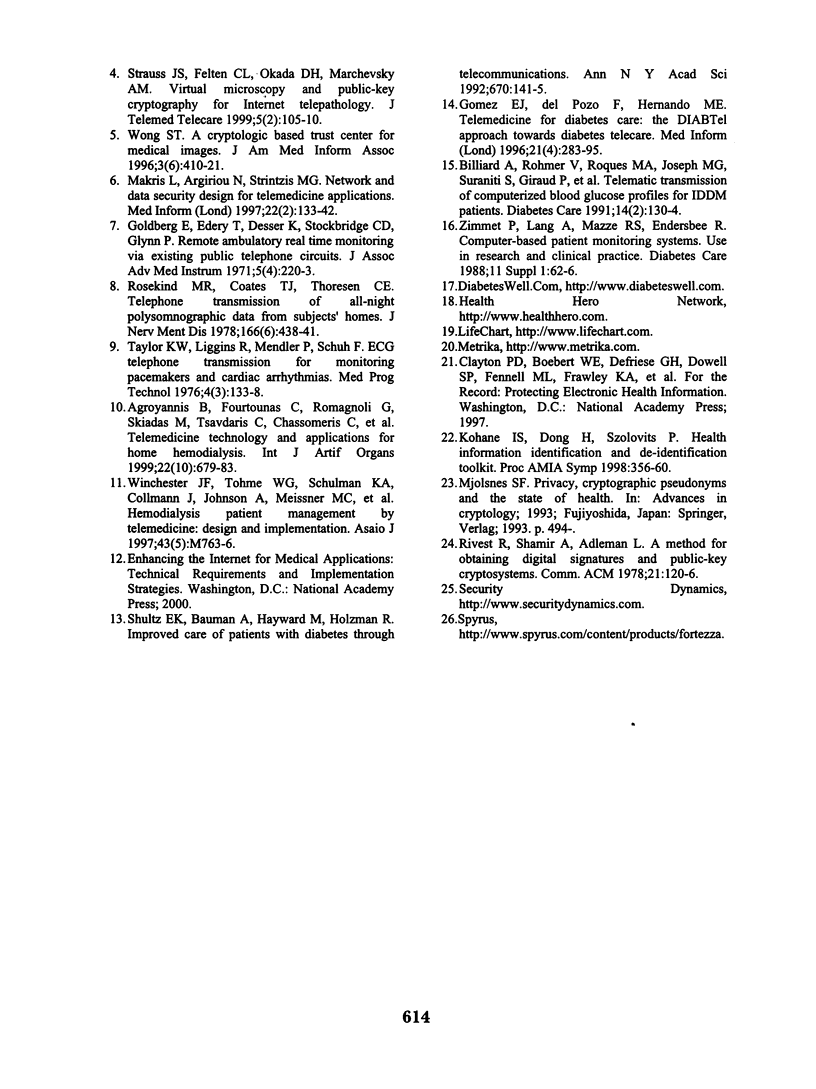
Selected References
These references are in PubMed. This may not be the complete list of references from this article.
- Agroyannis B., Fourtounas C., Romagnoli G., Skiadas M., Tsavdaris C., Chassomeris C., Tzanatos H., Kopelias I., Lymberopoulos D., Psarras J. Telemedicine technology and applications for home hemodialysis. Int J Artif Organs. 1999 Oct;22(10):679–683. [PubMed] [Google Scholar]
- Billiard A., Rohmer V., Roques M. A., Joseph M. G., Suraniti S., Giraud P., Limal J. M., Fressinaud P., Marre M. Telematic transmission of computerized blood glucose profiles for IDDM patients. Diabetes Care. 1991 Feb;14(2):130–134. doi: 10.2337/diacare.14.2.130. [DOI] [PubMed] [Google Scholar]
- Goldberg E., Edery T., Desser K., Stockbridge C. D., Glynn P. Remote ambulatory real time monitoring via existing public telephone circuits. J Assoc Adv Med Instrum. 1971 Jul-Aug;5(4):220–223. [PubMed] [Google Scholar]
- Gómez E. J., del Pozo F., Hernando M. E. Telemedicine for diabetes care: the DIABTel approach towards diabetes telecare. Med Inform (Lond) 1996 Oct-Dec;21(4):283–295. doi: 10.3109/14639239608999290. [DOI] [PubMed] [Google Scholar]
- Kane B., Sands D. Z. Guidelines for the clinical use of electronic mail with patients. The AMIA Internet Working Group, Task Force on Guidelines for the Use of Clinic-Patient Electronic Mail. J Am Med Inform Assoc. 1998 Jan-Feb;5(1):104–111. doi: 10.1136/jamia.1998.0050104. [DOI] [PMC free article] [PubMed] [Google Scholar]
- Kohane I. S., Dong H., Szolovits P. Health information identification and de-identification toolkit. Proc AMIA Symp. 1998:356–360. [PMC free article] [PubMed] [Google Scholar]
- Makris L., Argiriou N., Strintzis M. G. Network and data security design for telemedicine applications. Med Inform (Lond) 1997 Apr-Jun;22(2):133–142. doi: 10.3109/14639239709010886. [DOI] [PubMed] [Google Scholar]
- Mandl K. D., Katz S. B., Kohane I. S. Social equity and access to the World Wide Web and E-mail: implications for design and implementation of medical applications. Proc AMIA Symp. 1998:215–219. [PMC free article] [PubMed] [Google Scholar]
- Rosekind M. R., Coates T. J., Thoresen C. E. Telephone transmission of all-night polysomnographic data from subjects' homes. J Nerv Ment Dis. 1978 Jun;166(6):438–441. doi: 10.1097/00005053-197806000-00008. [DOI] [PubMed] [Google Scholar]
- Shultz E. K., Bauman A., Hayward M., Holzman R. Improved care of patients with diabetes through telecommunications. Ann N Y Acad Sci. 1992 Dec 17;670:141–145. doi: 10.1111/j.1749-6632.1992.tb26084.x. [DOI] [PubMed] [Google Scholar]
- Sima C., Raman R., Reddy R., Hunt W., Reddy S. Vital signs services for secure telemedicine applications. Proc AMIA Symp. 1998:361–365. [PMC free article] [PubMed] [Google Scholar]
- Strauss J. S., Felten C. L., Okada D. H., Marchevsky A. M. Virtual microscopy and public-key cryptography for Internet telepathology. J Telemed Telecare. 1999;5(2):105–110. doi: 10.1258/1357633991933404. [DOI] [PubMed] [Google Scholar]
- Taylor K. W., Liggins R., Mendler P., Schuh F. ECG telephone transmission for monitoring pacemakers and cardiac arrhythmias. Med Prog Technol. 1976;4(3):133–138. [PubMed] [Google Scholar]
- Winchester J. F., Tohme W. G., Schulman K. A., Collmann J., Johnson A., Meissner M. C., Rathore S., Khanafer N., Eisenberg J. M., Mun S. K. Hemodialysis patient management by telemedicine: design and implementation. ASAIO J. 1997 Sep-Oct;43(5):M763–M766. [PubMed] [Google Scholar]
- Wong S. T. A cryptologic based trust center for medical images. J Am Med Inform Assoc. 1996 Nov-Dec;3(6):410–421. doi: 10.1136/jamia.1996.97084514. [DOI] [PMC free article] [PubMed] [Google Scholar]
- Zimmet P., Lang A., Mazze R. S., Endersbee R. Computer-based patient monitoring systems. Use in research and clinical practice. Diabetes Care. 1988 Nov-Dec;11 (Suppl 1):62–66. [PubMed] [Google Scholar]


